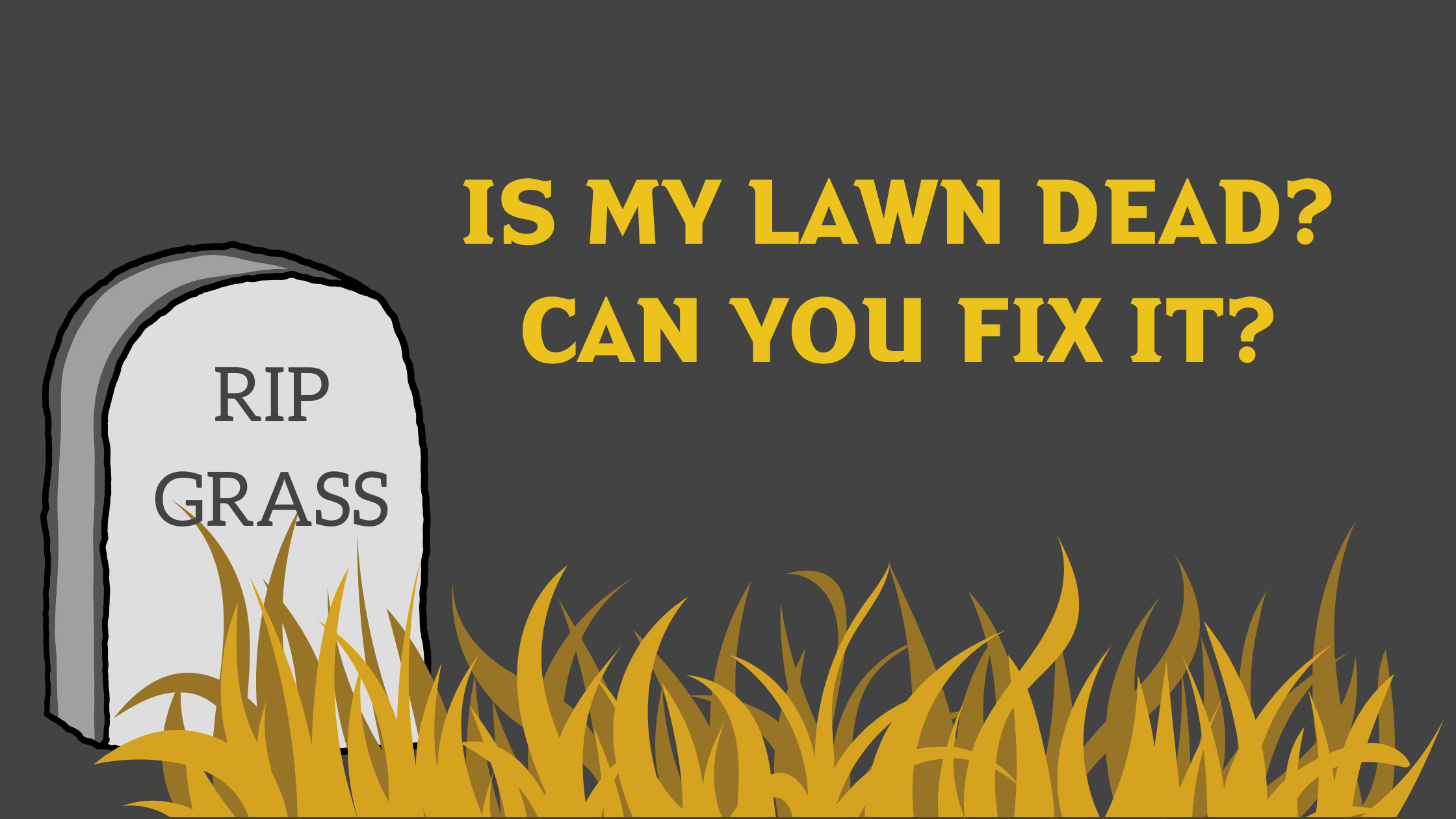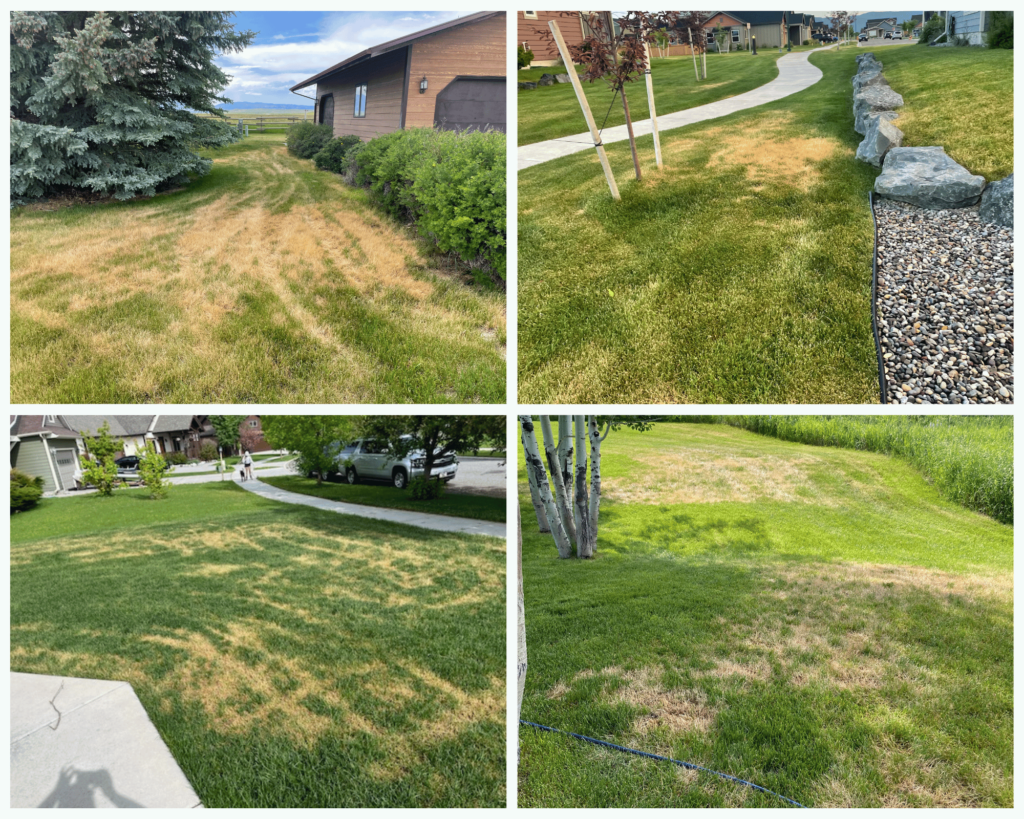Is My Lawn Dead? Can You Fix It?


Last week, we found the first example of Ascochyta Leaf Spot this year.
What you’re seeing is a fungal disease called Ascochyta Leaf Spot or “Melting Out.” The fungal spores are always present but usually don’t affect the turf unless it’s stressed and unable to protect itself, like these photos above show. Turf stress comes from poor or lack of irrigation, shallow / poor soil, or being mowed short. Although things will look worse before they look better, the lawn will recover if cultural practices can be changed (more water and mowing at the tallest height). It takes roughly 2-3 weeks of good cultural practices to start to catch back up.
I know it is hard to believe, but the rain we get in the spring isn’t close to enough. The whole month of April we got a half inch of rain (enough for one watering). Most of the rain storms we get produce around .1” of rain or 1/15 of what your lawn needs in a week.
In the photos, you can see tracks. You can see damage from the disease where the mower pushes the grass down killing the tissue of the leaf blade, leaving dead looking lines from the mower tracks. From there it can expand to patchy spots that make the lawn appear the lawn is “melting out”.
WHAT CAN I DO ABOUT IT?
With proper watering and mowing your lawn is going to naturally grow out of it in a couple of weeks, but in the meantime, we recommend following these guidelines:
- Start Watering! Lawns are a living organism and like us, they need water to survive. As a general guideline if you have healthy soil, an inch and a half of water is recommended per week (be sure to follow watering regulations) and water in the morning between 4-8 AM.
- Put your mower to the maximum height. This is SO important: taller grass = more plant tissue for photosynthesis, longer roots (they mimic the top growth), shaded soil to hold more water, and GREENER GRASS – the longer the leaf blade the more green there is.
- Now that you’ve put your mower to the maximum height, wait a week or two to mow. Allow the turf to come back and strengthen itself while maintaining or slightly increasing your watering schedule.
- Add more organics to the soil. More organics means more healthy bacteria and fungi that can help fight diseases such as this one. Just like our gut, when we add the right bacteria, our immune system is typically more strengthened and can outcompete sickness. Healthy soil full of organic material holds way more water! (If you are not on our Blended Organic Program what better time to start.)
If you want to learn more, we encourage you to read this article published by Colorado State University.
As always, please send us photos if you’re not sure what you’re seeing 406-222-1152.
 Billpay
Billpay
